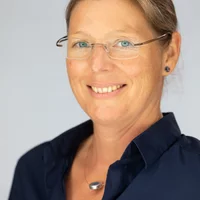Biography
Yasin Ekinci is the head of the Laboratory for X-ray Nanoscience and Technologies (LXN) at Paul Scherrer Institute (PSI). The Lab hosts six research groups with approximately 70 scientists, postdocs, PhD students, and engineers and operates three synchrotron beamlines at SLS along with an X-ray free-electron laser beamline at SwissFEL.
He received his Bachelor's degree in Physics at Middle East Technical University, Ankara, Turkey, in 1997; his Master's degree in Engineering Sciences at the University of De Montfort, Leicester, UK, in 1999. He obtained his Ph.D. in Max-Planck Institute for Dynamics and Self-Organization, Göttingen, Germany, in 2003. He was a postdoctoral researcher at PSI in 2004-2006. Between 2006 and 2012, he worked as a postdoctoral researcher and subsequently as a senior scientist and a lecturer in the Department of Materials at ETH Zürich. Since 2009, he works at PSI as a senior scientist. He was the head of the Advanced Lithography and Metrology group (2006-2022), which operates the XIL-II beamline and focuses on patterning, imaging and metrology applications using EUV light, particularly, in collaboration with major semiconductor companies. Between 2018 and 2022, he served as the head of the Laboratory for Micro and Nanotechnology (LMN), which operated PSI’s nanofabrication and characterization facilities and ETHZ-PSI Quantum Computing Hub.
His research experience encompasses diverse areas of nanoscience and technology, including atom optics, surface science, EUV lithography, resist materials, coherent scattering, lensless imaging, plasmonics, semiconductor nanostructures, biosensors, and nanofluidics. He is author/co-author of over 260 papers, 5 book chapters, and 10 patent applications. He received Young investigator of the year award of Swiss Society for Optics and Microscopy in 2009. He is a fellow of SPIE. His engagement in various professional roles includes vice-chairman of Swiss MNT Network, associate editor of Journal of Micro/Nanopatterning, Materials, and Metrology (JM3), and a member of Swiss Nanoscience Institute, advisory board of Hightech Center Aargau, steering committee of ETHZ-PSI Quantum Computing Hub, and organizational committees of several conferences.
Institutional Responsibilities
Strategic planning, scientific supervision, funding, personnel and financial management of the LXN. The organization unit is one of seven laboratories of the Photon Science Division of the PSI and hosts 6 research groups. Management of the lab with a total number of 70-80 people and an annual budget of about 8 MCHF. Responsibility for the operation of several infrastructures including three beamlines at Swiss Light Source and Swiss FEL. Strategic lead of the lab for performing outstanding academic and industrial research in nanoscience by exploiting the synergies between advanced micro/nanofabrication and synchrotrons and free-electron lasers. Planning of large projects in instrumentation. Technology development in advanced micro/nanofabrication techniques and optical metrology methods and subsequent commercialization. Supervision of Masters and Ph.D. students and postdocs. Operation and technology development at the XIL-II beamline. Member of various steering committees.
Scientific Research
His current research mainly focuses on methods of nanolithography and metrology using photons with short wavelengths and, in particular, at the extreme ultraviolet (EUV) wavelength.
One of his major achievements has been the technological development and operation of the EUV interference lithography tool, which has the world-record resolution in photolithography down to 6 nm half-pitch. His research group has strong collaborations with industrial partners who are the major players in the semiconductor industry. His contributions include the early development of photoresist materials to be used in future technology nodes of semiconductor manufacturing. At the same time, this novel technology offers new opportunities for academic research by providing nanostructures for various projects, thanks to its high resolution, high throughput, and large area capabilities.
In recent years, his research is also focused on the development of lensless imaging methods for applications in EUV photomask metrology. RESCAN project, which was initiated with industrial funding, involves the development of coherent diffraction algorithms and instrument development to provide solutions to the challenges of semiconductor manufacturing.
He also has research interests in various topics of nanoscience and technology, including semiconductor nanostructures, nanophotonics, nanofluidics, and nanocatalysis. For example, his group is developing nanofluidic devices for reliable, high-throughput and contact-free trapping, manipulation of nanoparticles for applications in soft condensed matter, biology, and medicine.
Selected Publications
For an extensive overview, we kindly refer you to our publication repository DORA and for the research profile and the personal publication lists on Google Scholar (https://scholar.google.com/citations?hl=en&user=aR3ZzTIAAAAJ), Publons (https://publons.com/researcher/2564808/yasin-ekinci/), and ORCID (https://orcid.org/0000-0002-0331-0501).
- Catalyst support effects on hydrogen spillover
W. Karim, C. Spreafico, A. Kleibert, J. Gobrecht, J. VandeVondele, Y. Ekinci, and J. A. van Bokhoven, Nature 541, 68 (2017)
Hydrogen spillover is a phenomenon in which hydrogen reduces a nanoparticle through diffusion on a substrate. This effect contributes decisively to the efficiency of catalysis with hydrogen. It is very difficult to verify experimentally and, therefore, controversially discussed for 60 years. In this paper, in which YE and JAB are the corresponding authors of PSI, we designed a model system using advanced lithographic methods and studied the effect using single-particle spectromicroscopy.
- Photolithography reaches 6 nm half-pitch using extreme ultraviolet light
D. Fan and Y. Ekinci
J. Micro/Nanolith. MEMS MOEMS 15(3), 033505 (2016)
EUV lithography is the leading-edge technology in semiconductor manufacturing at 7 nm technology node and below, where 7 nm node corresponds to dense features of about 20 nm half-pitch. With this paper, we set a new record resolution in photolithography and demonstrate that there are no fundamental limitations of photolithography down to this resolution.
- Deep-ultraviolet surface-enhanced resonance Raman scattering of adenine on aluminum nanoparticle arrays,
S. K. Jha, Z. Ahmed, M. Agio, Y. Ekinci, and J. F. Löffler,
J. Am. Chem. Soc. 134, 1966 (2012).
Surface-enhanced Raman spectroscopy (SERS) is a powerful tool for enhancing the inherently low Raman scattering of molecules. In this paper, where YE is the corresponding author, we used aluminum nanoparticles as plasmonic structure and deep UV excitation wavelength, which provides fluorescence-background free Raman spectra and increased Raman scattering due to reduced wavelength and resonance effects. We achieved real-time, reproducible, and label-free detection of adenine with zeptomole sensitivity.


